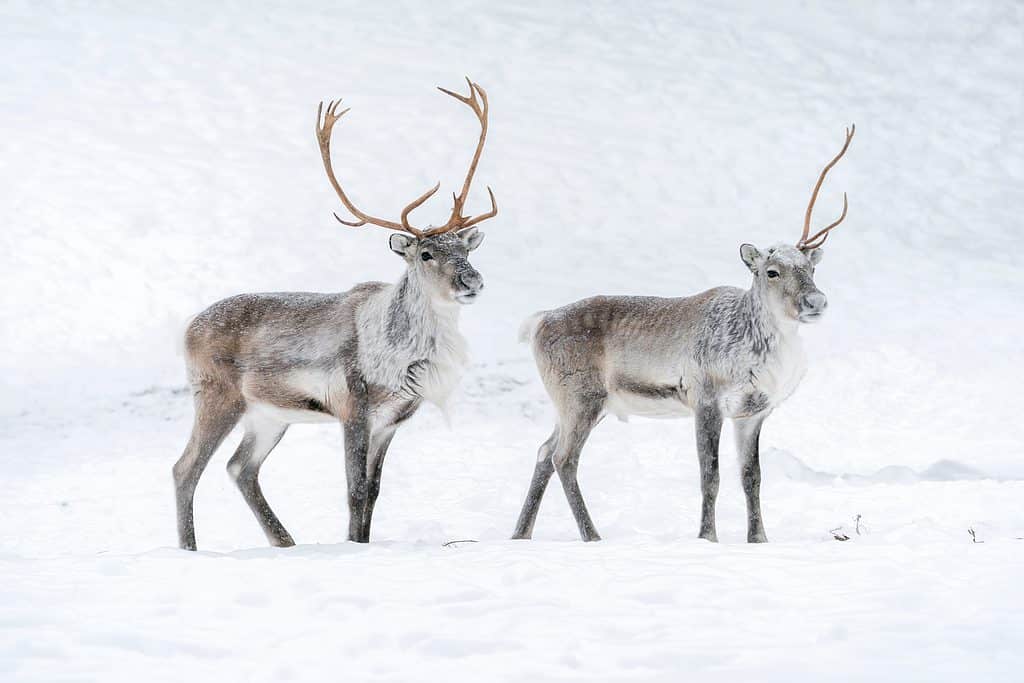Alaska, the northernmost state in the U.S., sees plenty of cold weather and snow. Sometimes, it can be so cold that the air cannot hold much moisture, meaning that winter storms don’t drop as much snow as you would think. Some regions of Alaska see snow in the summer, making the designation of the first snow of the year almost meaningless. So, what was the biggest October snowstorm in Alaska?
The Biggest October Snow

What was the biggest October Snowstorm in Alaska?
©Nicholas Courtney/Shutterstock.com
It should come as no surprise that the biggest October snowstorm to hit Alaska occurred on October 26, 1926, in what is now known as Utqiagvik. At the time, this town on the northernmost tip of Alaska was known as Barrow. Utqiagvik’s snowiest month happens to be October; the average snowfall during October is 8.8 inches (22.35 cm) here. The 15 inches (38.1 cm) that fell in 1926 was nearly double the annual monthly average.
Impacts in Utqiagvik
Back in 1926, the population of Utqiagvik was about 320 people. Most of these people were Inupiat and accustomed to the harsh weather of northern Alaska. Utqiagvik had no modern infrastructure, and the residents traveled by dog sled. Since the Inupiat people survive by hunting the bowhead whale in the spring and fall, the heavy October snowstorm may have negatively impacted the community over the following winter.
Alaskan Wildlife During the Storm

Caribou
are accustomed to snow in Utqiagvik, Alaska.
©Tam and Trace Photography/Shutterstock.com
Utqiagvik, AK, animals are evolutionarily equipped to handle the arctic weather. Most mammals grow thick coats that protect them from the elements. Arctic foxes, brown lemmings, and polar bears will burrow and conserve energy to wait out storms. Caribou will huddle together and rely on their warm coats to stay warm. Ringed seals require snow to create mounds and caves over ice holes for their young. There isn’t much cover for birds of any kind during storms here; the land is flat and featureless. Birds will find little to no shelter on the Alaskan shore, and most will migrate from the area in the fall or flee an upcoming storm.
The Aftermath
Once the storm passed, the people probably would have been able to get around the area via dog sleds. The Inupiat would have been able to resume their whale hunts. As far as a thaw goes, it’s not very likely that this would have followed the storm. Winter temperatures would have been the norm until warmer temperatures in the spring and summer.
The photo featured at the top of this post is © David_Pastyka/Shutterstock.com
Thank you for reading! Have some feedback for us? Contact the AZ Animals editorial team.






